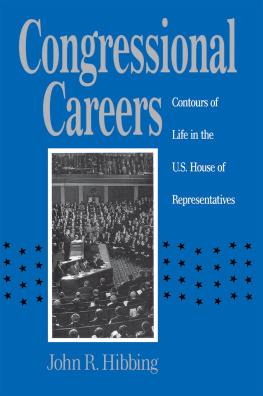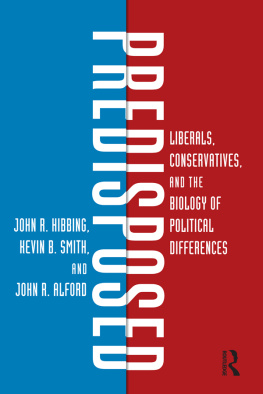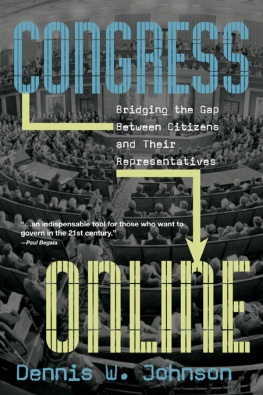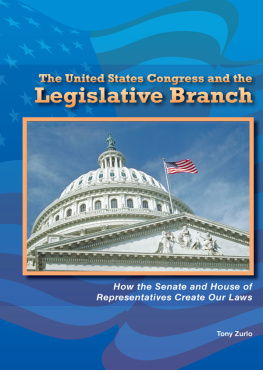Tables and Figures
Tables
2.1 Summary Statistics of the Relationship between Tenure and Share of the Vote Received, 19461984
2.2 Summary Statistics of the Relationship between Tenure and Percentage of Incumbents Reelected, 19461984
2.3 Summary Statistics of the Relationship between Tenure and Share of the Vote Received, Non-South Only, 19461984
2.4 Predicting Electoral Support in the Eighth Reelection Bid with Support in the First, Classes of 1950, 1960, and 1970
3.1 Rating of Selected House Positions in the Modern Era
3.2 Mean Position Score and Degree of Skewness in Formal Position Distribution among House Democrats, 19551986
4.1 Predicting Roll Call Scales in the Seventh Term with Roll Call Scales in the First Term, by Class
7.1 Simple Correlations of Variables in the Integrated Model
Figures
2.1 Emanuel Cellers Electoral Career
2.2 Mean Share of the Vote, by Tenure, 19461984
2.3 Percentage of Incumbents Who Win Reelection, by Tenure, 19461984
2.4 Incumbents Chances of Surviving Primary Election Stage, Three-Election Average, 19601984
2.5 Decade-by-Decade Analysis of the Relationship between Vote Share and Tenure, 19461984
2.6 Lines of Best Fit for the Vote Share-Tenure Relationship, by Decade, 19461984
2.7 Decade-by-Decade Analysis of the Relationship between Percentage Reelected and Tenure, 19461984
2.8 Lines of Best Fit for the Percentage Reelected-Tenure Relationship, by Decade, 19461984
2.9 Class-by-Class Analysis of the Relationship between Vote Share and Tenure, Classes of 1944, 1954, 1964, and 1974
2.10 Class-by-Class Analysis of the Relationship between Vote Share and Tenure, Controlling for Mortality Effects, Classes of 1950, 1960, and 1970
3.1 Variations in the Distribution of Formal Positions among House Democrats, 19551986
3.2 Mean Position Rating for House Democratic Classes of 1957, 1963, 1969, and 1975
3.3 Standardized Mean Position Rating for House Democratic Classes of 1957, 1963, 1969, and 1975
3.4 Standardized Mean Position Rating for Pre- and Post-1969 House Democratic Classes
4.1 Standardized Roll Call Participation by Tenure, with and without Mortality Effects, 19471982
4.2 Standardized Party-Support Scores by Tenure, with and without Mortality Effects, 19471982
4.3 Standardized Conservative Coalition Support Scores by Tenure, with and without Mortality Effects, 19571982
4.4 Class-by-Class Analysis of the Relationship between Party Support and Tenure, Controlled for Mortality, Classes of 1947, 1953, 1959, and 1965
4.5 Class-by-Class Analysis of the Relationship between Conservative Coalition Support and Tenure, Controlled for Mortality, Classes of 1959, 1963, and 1967
4.6 Walter Barings Roll Call Career
4.7 Wayne Aspinalls Roll Call Career
5.1 Standardized Measures of Legislative Activity, by Tenure, 19531985
5.2 Relative Legislative Activity Levels of First-Term and Eighth-Term Representatives, 19671986
5.3 Class-by-Class Analysis of the Relationship between Legislative Activity and Tenure, Classes of 1957, 1961, 1967, and 1971
5.4 Standardized Legislative Efficiency and Specialization, by Tenure, 19531985
5.5 Class-by-Class Analysis of the Relationship between Specialization and Tenure, Classes of 1957, 1961, 1967, and 1971
6.1 Standardized Travel Back to the District in the First Year of Each Congress, by Tenure, 19711985
6.2 Changes in the Mean Number of Reimbursed Trips Back to the District in the First Year of Each Congress, 19711985
6.3 Class-by-Class Analysis of the Relationship between Travel Back to the District and Tenure, Classes of 1959, 1965, 1971, and 1977
6.4 Aggregate Changes in Percentage of Staffers Assigned to District Offices, 19591985
6.5 Standardized Percentage of Staffers Assigned to District Offices, by Tenure, 19591985
6.6 Class-by-Class Analysis of the Relationship between District Staff Assignments and Tenure, Classes of 1973 and 1975
6.7 Scatterplot of the Relationship between Tenure and the Visibility Gap, 1978 NES Data
7.1 Expected Relationships of the Variables in the Integrated Model of Congressional Careers
7.2 Two-Stage Least Squares Estimates of the Integrated Model
7.3 Two-Stage Least Squares Estimates of the Integrated Model, Controlling for Between-Unit Variation
Preface
I have a knack. It is not a very good knack for a social scientist to have, and I try my best not to pass it on to any students with whom I come into contact, but it is a knack nonetheless. I frequently involve myself in research projects requiring prodigious amounts of data collection. Once the study for which the data were originally collected is completed, I move on to other things, apparently content to know these mounds of data are resting securely in my file cabinets and on my computer discs. As many of my graduate students will attest, I am among the worlds least efficient data collectors. For example, in this manuscript, as was the case with my only other book-length effort to date, large and distinct data sets were required for each substantive chapter.
The reason I mention all this is that, as a result of the data requirements of this project, I have an unusual number of people and organizations whose assistance I want to recognize publicly. First, there are those who provided financial assistance. The University of Nebraska Foundation Fund for Research on the U.S. Congress has been an extremely valuable resource. I greatly appreciate the assistance of the anonymous benefactor of the fund and also the first executive director of the fund, Adam Breckenridgewhose Kentucky family, I might add, knows something about careers in Congress. The Dirksen Congressional Center supplied financial assistance at the crucial nascent stages of the project, and I am deeply appreciative of the centers support. And the National Science Foundation provided the major source of funding for this effort in the form of grant number SES-8619518. My sincere thanks to NSF.
Most of the data were collected quite recently, but the foundation for the data set used in come from the Inter-University Consortium for Social and Political Research. Neither that organization nor the original collectors of the data bear any responsibility for the analyses and interpretations contained in this document. In compiling the data for the remaining chapters, I was fortunate to have the opportunity to work with several very capable graduate assistants. My thanks to Zoltan Barany, Don Beahm, Chris Carney, Rebekah Herrick, Tim Howard, Mark Leeper, Ed Miller, Patty Moock, Jay Ovsiovitch, and Jiang Ren. But most of all I should thank Michael Moore and Jerry Stubben for the extra efforts they made. Without the organizational abilities and hard work of first Jerry and then Michael, I would have drowned in a sea of data. I am in their debt.










